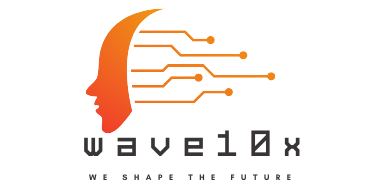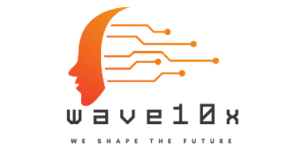
The promise of artificial intelligence (AI) in healthcare is captivating, offering the potential to improve outcomes and revolutionize the way we approach medical care. While there are challenges to overcome, such as data privacy concerns and fears of mismanaged care due to machine error, the benefits of AI-powered tools and solutions have caught the attention of governments, tech companies, and healthcare providers. In this article, we will explore five AI advances in healthcare that hold tremendous potential for transforming the industry.
1. AI-Assisted Robotic Surgery
Robotic surgery, assisted by AI, is one of the most promising advancements in healthcare. With an estimated value of $40 billion to the healthcare industry, robots are revolutionizing surgical procedures by analyzing data from pre-operative medical records. By guiding a surgeon’s instrument during surgery, robots can lead to a 21% reduction in a patient’s hospital stay. This approach is considered minimally invasive, as it eliminates the need for large incisions, allowing patients to heal faster.
The positive results of AI-assisted robotic surgery are indeed promising. A study involving 379 orthopedic patients found that AI-assisted robotic procedures resulted in five times fewer complications compared to surgeons operating alone. Furthermore, recent advancements have seen robots being used in eye surgeries, such as the first-ever robot-operated human eye surgery. The Da Vinci surgical robot, known for its advanced capabilities, allows doctors to perform complex procedures with greater control than conventional approaches. Heart surgeons are also benefiting from AI advancements with the assistance of miniature robots like Heartlander, which enter small incisions on the chest to perform mapping and therapy on the surface of the heart.
2. Virtual Nursing Assistants
Virtual nursing assistants have the potential to revolutionize patient care by providing round-the-clock support and guidance. By interacting with patients and directing them to the most effective care settings, virtual nursing assistants could save the healthcare industry a staggering $20 billion annually. These assistants are available 24/7, allowing patients to ask questions, receive monitoring, and receive quick answers. This regular communication between patients and care providers outside of office visits can help prevent hospital readmissions and unnecessary visits.
One notable example of a virtual nursing assistant is Care Angel’s AI-powered solution. This virtual nurse assistant not only answers patients’ questions but also provides wellness checks through voice and AI. The combination of virtual nursing assistants and AI technology enables more personalized and continuous care for patients.
3. AI in Clinical Judgment and Diagnosis
While AI’s role in diagnosing patients is still in its early stages, there have been significant advancements in this field. Various studies have demonstrated AI’s ability to match or even surpass human performance in certain diagnostic tasks. For instance, a Stanford University study tested an AI algorithm against dermatologists to detect skin cancers, and the AI algorithm performed at the same level as human experts.
Another exciting development is the use of AI in detecting cardiac arrests. A Danish AI software company tested its deep-learning program by analyzing emergency calls. The algorithm analyzed factors such as what a person says, the tone of voice, and background noise to detect cardiac arrests with an impressive 93% success rate, surpassing the 73% success rate of human dispatchers.
In the field of breast cancer detection, Baidu Research has developed a deep learning algorithm that outperforms human pathologists. Early tests have shown that the algorithm’s accuracy in identifying breast cancer metastasis exceeds that of human experts. These advancements in AI-driven clinical judgment and diagnosis have the potential to revolutionize healthcare by improving accuracy and efficiency.
4. Workflow and Administrative Task Automation
AI’s impact in healthcare extends beyond medical procedures and diagnosis. One significant advantage is its ability to automate administrative tasks, offering potential savings of $18 billion for the healthcare industry. By leveraging AI technology, doctors, nurses, and other healthcare providers can save valuable time on administrative duties, allowing them to focus more on patient care.
For example, voice-to-text transcription technology can assist in ordering tests, prescribing medications, and writing chart notes. The Cleveland Clinic and IBM have partnered to utilize IBM’s Watson to mine big data and provide physicians with personalized and efficient treatment experiences. Watson’s natural language processing capabilities enable the analysis of thousands of medical papers, helping inform treatment plans and promoting evidence-based medicine.
5. AI in Image Analysis
Image analysis plays a vital role in healthcare, aiding in the diagnosis and treatment of various conditions. However, the process of analyzing medical images can be time-consuming for human providers. AI has the potential to revolutionize image analysis by significantly reducing processing time and improving accuracy.
Researchers at MIT have developed a machine-learning algorithm capable of analyzing 3D scans up to 1,000 times faster than current methods. This near real-time assessment can provide critical inputs for surgeons during operations, enabling them to make more informed decisions. Additionally, AI-powered image analysis has the potential to enhance the next generation of radiology tools, reducing reliance on tissue samples and improving diagnostic capabilities.
AI image analysis also holds promise for remote areas with limited access to healthcare providers. By leveraging AI technology, patients can use their camera phones to capture images of rashes, cuts, or bruises. These images can then be analyzed remotely, assisting healthcare professionals in determining the necessary care and treatment options. Additionally, AI-driven image analysis can enhance telemedicine, making it more effective and accessible to patients in remote or underserved areas.
In the complex world of healthcare, AI tools have the potential to support human providers in delivering faster service, accurate diagnosis, and data analysis for improved patient outcomes. As AI and machine learning continue to advance, the future of healthcare looks promising, with the potential to transform the way we approach medicine and ultimately save lives.



